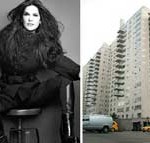Trending
Why multifamily buildings don’t trade very often in Queens
Borough consistently lags behind other parts of the city in this sector

Queens has been at the forefront of New York City’s development boom, with major new megaprojects rising from Astoria to Flushing. And with Amazon’s official selection of Long Island City for half of its so-called HQ2, the appetite for large scale developments in Queens is likely to accelerate even further.
But one segment of the local market that has remained consistently slow is deals for multifamily buildings, where activity almost always lags behind the other boroughs. During the third quarter of the year, Queens saw just 11 deals across 14 buildings for $93.33 million, according to data from Ariel Property Advisors.
During the second quarter, the borough saw 18 deals across 25 buildings for about $283 million, and just 13 deals across 18 buildings for about $178 million during the first quarter. Throughout 2017, Queens saw 43 deals across 115 buildings worth $849 million, making it the only borough not to break the $1 billion mark in annual sales. These were the lowest number by borough in every instance and every category, with the sole exception of dollar volume during 2018’s second quarter (the Ariel reports examine every part of the city except Staten Island).
Michael Tortorici, executive vice president at Ariel, said Queens has had a slow multifamily market for as long as he has been analyzing the borough. He generally sees somewhere around 60 trades per year.
“The demand is there. The supply often isn’t,” he said, “and I think that fact is seen in the pricing, which is consistent and has been, compared to other parts of the city, also very competitive.”
Part of the reason for Queens’ slow multifamily market could be the relatively small amount of multifamily buildings it has compared to the other boroughs. Ariel identified just 3,371 tax lots in the borough that have one or more multifamily or mixed-use building on them with 10 or more units. This number was 6,057 in the Bronx, 7,361 in Brooklyn and 12,726 in Manhattan.
There is also more of a general reluctance among multifamily owners in Queens to sell their properties, given that they tend to be very secure investments, Tortorici said.
“Queens multifamily owners are very loyal to Queens and to their holdings, and many of them are very stable in value with appreciation,” he said. “They’re stable in terms of collections. The income growth is steady and consistent.”
Because of the stability, owners are more likely to commit to longterm holds and pass it on generationally, he said.
Stephen Preuss, a broker at Cushman & Wakefield who frequently does deals in Queens, said such a circumstance would have to be akin to a property increasing in value by 100 percent, rather than just 30 or 40 percent. He noted that he rarely sees big multifamily deals come across his desk and that major deals for development sites in Queens are much more common.
“I think Queens hasn’t had the run up as far as values go as some of the areas in Upper Manhattan and Brooklyn,” he said, “so it’s not as clear of a choice for groups to sell.”
Owners are particularly worried about selling their properties before growth in Queens reaches its peak, he continued.
“They don’t want to cut themselves off to a point where we could see another 20 to 30 percent growth in those particular assets,” he said.
There are exceptions. Treetop Development and the Weinroth family sold a six-building multifamily portfolio in Flushing and Elmhurst to A&E Real Estate Holdings earlier this year for $118.5 million. The portfolio contains a total of 428 apartments, and Rosewood Realty Group’s Aaron Jungreis brokered the deal.
The transaction was largely a matter of good timing for the sellers, Jungreis said. He stressed that this was an atypical deal for Queens given the value and growth potential of its multifamily market.
“Queens owners are more generational than any other neighborhood, even Brooklyn,” he said, “and I just find that it’s much harder to get properties for sale in Queens. People really want to hold onto them.”
Adam Mermelstein, principal of Treetop, said they had owned the Elmhurst and Flushing portfolio for about two years and were not actively shopping them around. They had planned to renovate and hold onto the properties for years but soon found themselves overwhelmed with offers that were more competitive than they expected. Treetop bought the properties in 2015 for about $108 million, meaning they profited by about $10 million on the sale.
“We had other owners and brokers that were knocking on our door maintaining that they could provide us with a price that we, frankly, did not anticipate we would be achieving so early after our purchase,” he said.




